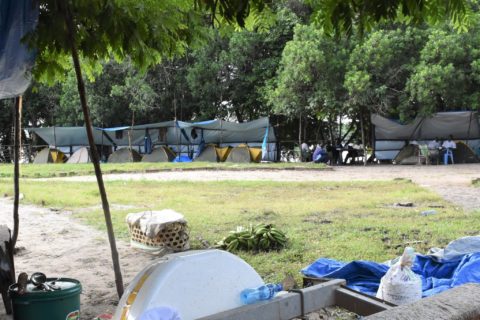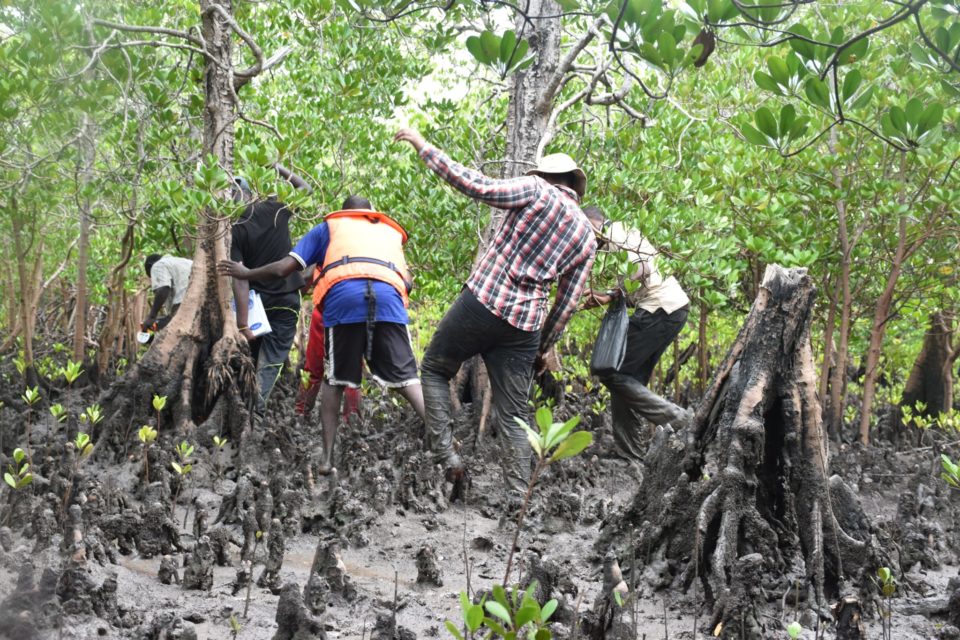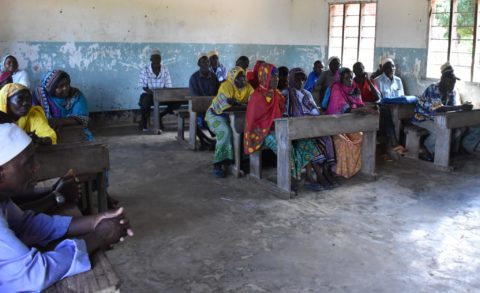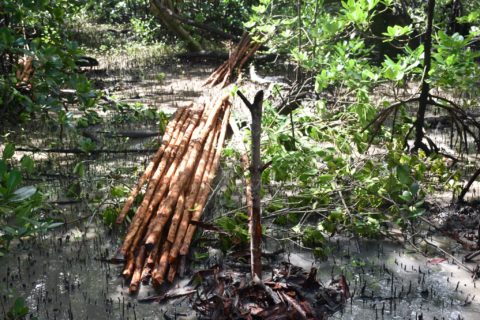
Researchers carry out baseline studies for 54,000Ha of mangroves in Rufiji Delta
-
Mangrove Capital Africa
Rufiji Delta is a host to several villages including Nyamisati, and Jaja. During this month of May – these villages have been home to a team of over 25 researchers who set camp within the villages so as to undertake an inventory of the 54,000 Ha of mangroves in the Rufiji Delta. The team, led by Wetlands International comprised of Researchers from Sokoine University of Agriculture, Tanzania Forest Services as well as University of Dar es salaam.

Every morning, the teams emerge from their tents as early as 5 am, to catch the boats to different work-stations. On this particular day we catch up with the teams in Jaja village, at the crack of dawn, as 4 researchers wade through the rain-water surrounding Jaja village to undertake a socio-ecological survey in Mbwera West village. Two hours later – another group of about 12 researcher sets out, each with specific roles, aboard a boat to undertake ecological surveys in the vicinity of Jaja and Mbwera villages. Their target is to cover at least 90 plots in the entire Rufiji Delta. Equipped with gumboots, raincoats and guided by a GIS expert from TFS Mr.Elias Ntiba Nsubile who was armed with his GPS and map, they locate the plots and score them as they navigate through the muddy mangroves sometimes tripping, falling and getting stuck in the mud but relentlessly marking out 70 by 70 plots, counting mangroves, measuring their heights and widths and recording them on sheets of paper.


At this stage, none of the numbers on the recording sheets makes sense to us but they tell us that this analysis will go a long way in helping map hotspots while developing of the Rufiji Delta Management Plan. We learn from Ann Lawuo – in charge of coastal mangrove forests that the last management plan was prepared in 1991, therefore TFS is looking forward to having a new plan that will guide in the development of this mangrove ecosystem. The following day we accompany the socio-ecological and socio-economic teams to Ruma Village. We approach Ruma village in the Southern part of Rufiji Delta with much enthusiasm. We are welcomed by the warm villagers. The tall palm trees sway and join the villagers in welcoming us. After the normal greetings, we are ushered into the chief’s office who officially paves way for us to interact with the villagers.
Here the teams sought to understand the communities as well as their relationships with the mangroves. This information is not only important in the development of the mangrove management plan but also in ensuring community participation. The teams held focus groups discussions and one on one interviews were organised. The community members were cooperative and eager to express their views. The researchers made a deliberate effort to ensure the views of both men and women were captured. The main sources of income in Ruma are agriculture, fisheries, livestock-keeping as well as petty trade such as hotels and shops. The villagers grow food crops such as maize, rice, and cassava. These are grown within the village where there are no mangroves. To ensure inclusivity In one of the gatherings, we attended they had the area chief, fishermen, farmers, women and elderly people participate.

From the discussions it was clear that the community members understand the diverse benefits derived from the mangrove. However, the mangroves are plummeting at an alarming rate due to overexploitation mainly for building poles and timber. Species like Rhyzophora Mocronata and Ceriops tagal are commonly known to offer strong poles that are cut and sold by specific “mangrove traders”. A bunch of ten thin poles about the width of ones’ wrist fetches between 5000 to 7000 Tanzanian shillings (about 2 to 3 Euros). The thicker mangrove poles fetch more money. The villagers tell us that the building poles are sold within Ruma and also purchased by middlemen who transport them as far out as Zanzibar and Mafia Islands where they sell them at 2 or 3 times the price at which they purchase them in Ruma!

The fish supply, they tell us – is not constant as their populations have decreased while the number of fishermen has increased over time. The fish also migrate during specific seasons to breed or feed. Additionally, there is an increase in the number of big trawlers that use unsustainable methods of fishery that scrape the ocean floors of its biodiversity including coral reefs and seagrasses that are important for the fish and take long to regenerate. Our visit here gave the community a glimpse of hope as they look forward to working with Mangrove Capital Africa team on various issues including improvement of the fish value chain as well as an improvement in their fishing technologies. At the end of the discussions, the community members noted that if any mangrove management initiatives are put in place – they should not affect their livelihoods negatively.
As Wetlands International – one of the ways in which we can build capacity on mangrove conservation and management is by empowering young and upcoming scientists. An interview with one of the young researchers, Prince from the socio-economic team left us inspired. He was happy to have been part of the team supporting the data collection and as he shared he learned a lot from the team leader – Dr. Dominic from Sokoine University of Agriculture.
Mangrove Capital Africa is a programme led by Wetlands International and funded by DOB Ecology
